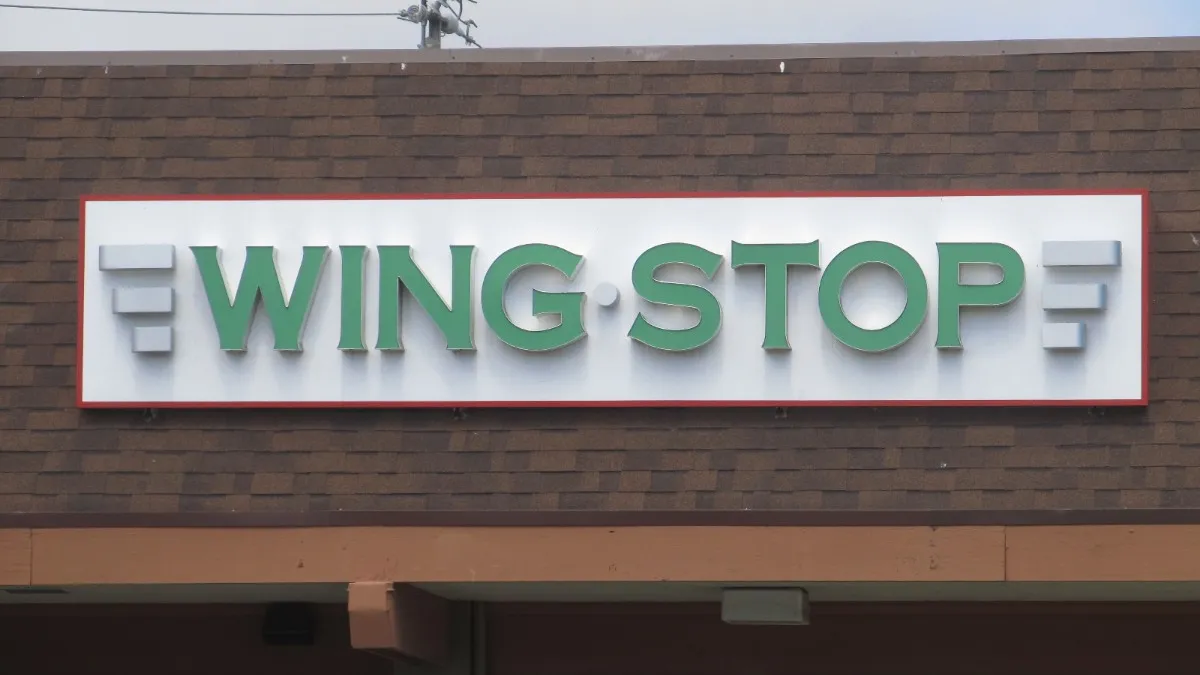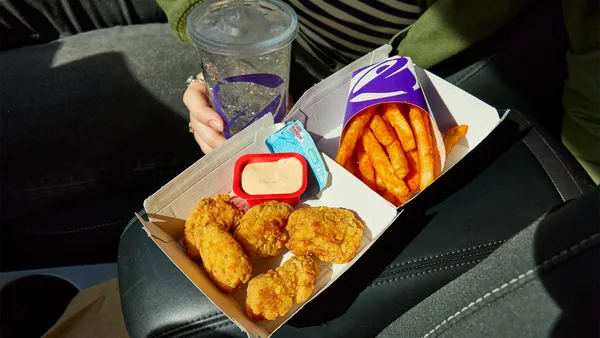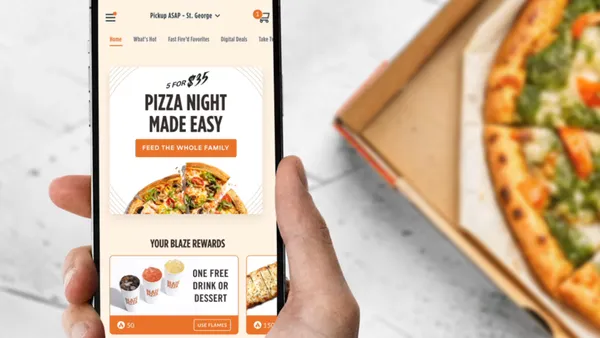Dive Brief:
- Wingstop is shaking up its leadership structure to more closely mirror that of a tech company, bringing IT and marketing functions closer together, per an announcement.
- As part of the changes, the chain operating over 1,600 locations worldwide has appointed Stacy Peterson as executive vice president, chief digital and technology officer. Additionally, the brand promoted Marisa Carona to chief growth officer and Stevie Benjamin to senior vice president of digital marketing.
- The realignment comes as digital sales now account for nearly 65% of Wingstop's overall mix. The restaurant category is broadly investing more in digital and mobile capabilities as consumer habits change quickly due to the coronavirus pandemic.
Dive Insight:
Wingstop is refashioning some of its leadership structure in the mold of a tech company as it moves to enshrine digital as the largest driver of its business. The Dallas-based chain has continued to put "meaningful investments" into its tech stack, according to CEO Charlie Morrison, and the new executive appointment and promotions support those bets, in part by closely aligning them with marketing.
The brand is ultimately aiming to get more precise in marketing to the 25 million guests logged on its first-party data platform and break away from traditional promotion-based marketing tactics that are common in the fast food category.
"With this, we'll have two distinct agile and collaborative teams that focus on varying levels of communication to our guests," said Morrison of the leadership changes in a press statement. "One which will lead 'micro,' one-to-one communication, and one which will lead 'macro,' one-to-many communication."
The company eventually wants to achieve 100% digital transactions, per the announcement. Wingstop surpassed $1 billion in systemwide digital sales last year, with the channel representing around 60% of its total mix.
Wingstop joins others in the fast food space that are altering their operations to account for pandemic-related trends. Digital and mobile ordering, along with contactless pickup options, have become common as consumers eschew the dine-in experience — a factor that is once again in the spotlight due to growing concerns over the COVID-19 delta variant.
The health crisis at the same time has led to increased adoption of newer restaurant formats. Ghost kitchens — delivery-only locations that don't carry the usual retail footprint — are one area Wingstop is eyeing closely. The brand late last month laid out an ambitious plan to open more ghost kitchens in Manhattan, a New York market it hadn't previously cracked into due to high real estate costs.
Recent Wingstop marketing efforts have also leaned on the digital side of things. Amid a national chicken wing shortage earlier this summer, the company launched a thighs-only virtual brand called Thighstop through its exclusive third-party delivery partner DoorDash and on Thighstop.com.















